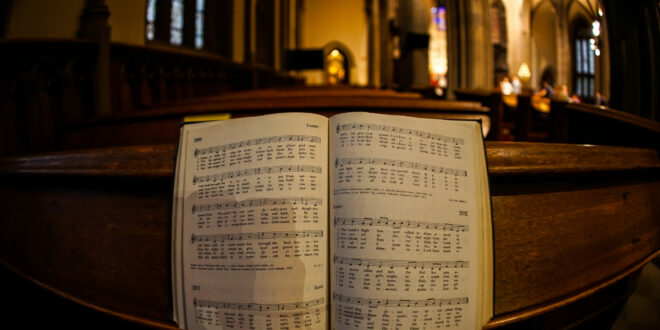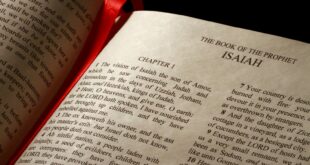The Jewish temple is a natural setting for a Christian to begin this study because it is in this context that God initiated the ministry of music. The vast majority of Old Testament verses dealing with music concern temple worship and it is from these references that much insight is gained into God’s overall plan for music.
The purpose of music as set forth in the Old Testament is given in several passages: praise is mentioned in 1 Chronicles 23:5; joy is referred to in 2 Chronicles 29:30; glorifying God in 2 Chronicles 5:13; the accompaniment of sacrificial offerings in 2 Chronicles 29:27-28, and prophecy in 1 Chronicles 25:1. These are the purposes relating exclusively to worship and are examples from a multitude of passages. Praise and exultation of God is stressed as a purpose for music, as can be clearly seen in the Psalms. Music as a direct part of worship is clearly stated in 2 Chronicles 29:28. “While the whole assembly worshiped the singers sang and the trumpets sounded…” A very graphic picture is given in 2 Chronicles 5:11-14, too long to quote here.
Of the many interesting insights revealed about music in the above passage the most evident is the reference to many different kinds of instruments. They are representative of the major classifications of instruments: wind, strings, and percussion, and are prototypes of those played today.
Another very crucial area concerns the textual content of the temple music. The most illustrative portion of the Old Testament dealing with this is the Psalms. In addition the Song of Hannah (1 Samuel 2): the Song of Moses (Exodus 15), and the Song of Deborah and Barack (Judges 5), are very revealing. Although there are distinctives within each of these passages, the basic content of Hebrew music can be summarized generally as focusing upon the person and work of God.
The question arises, “What was the motivation for making music?” Joy is apparent in the Psalms. There is a more obscure reference in Job 29:13. “I made the widows heart sing for joy.” Music was made in response to the person and work of God and in this vein can be said to be an act of worship. One can make music because God is at work in the life of each individual believer. Psalm 13:6 says, “I will sing to the Lord because he has dealt bountifully with me.” Psalm 147:7 adds, “Sing to the Lord with thanksgiving…”
Several passages furnish additional information regarding the use of music in the temple:
One, musicians were appointed and were skillful, instructing others in the art (1 Chronicles. 15:16-29. Two, musicians were set apart for service; they prophesied in giving thanks and praising the Lord , and were trained in singing (1 Chronicles 25:1-8). Three, the Jewish people recognized the phenomenal power of music (1 Samuel 16:14-23)). Four, music ministry was commanded by God for playing a vital role in worship (2 Chronicles 29:25-28).
The local church can always be confident that God is well pleased with any serious attempt to develop an organized, quality music ministry, with trained musicians. Those involved in planning or performing music need to do so with clear purposes in mind. All types of instruments have been sanctioned by God for use in worship and praise to God. The textual content of vocal music should be a primary concern. In every case, singing or playing an instrument in church should never be considered a performance, but rather an expression from the heart that will contribute to the corporate worship experience of the congregation.
In closing here are the words of Psalm 150:
“Praise the Lord! Praise God in his sanctuary; praise him in his mighty heavens! Praise him for his mighty deeds; Praise him according to his excellent greatness!
Praise him with trumpet sound. Praise him with lute and harp. Praise him with tambourine and dance. Praise him with strings and pipe. Praise him with cymbals; praise him with loud clashing cymbals! Let everything that has breath praise the Lord. Praise the Lord!
(All the material on the Old Testament perspective on music and worship was taken from my master’s thesis, “A Church Music Training and Resource Manual for Laymen,” Western Seminary, 1979, pages 1-6)
 The Bottom Line, Ministries Christian News, Articles, & Poetry
The Bottom Line, Ministries Christian News, Articles, & Poetry 





thanks John。。
very helpful